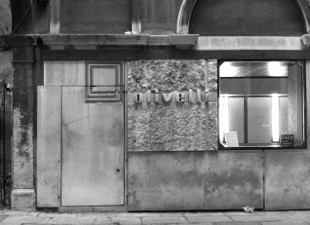DSGN3100: Architecture Studio
Poetics of Material Assembly
DSGN3100: Architecture Studio
Poetics of Material Assembly
Introduction:
"And you can make the same conversation with concrete. And you can make the same conversation with paper, or with papier-mache, or with plastic, or with marble, or any material that has its nature. And it’s the beauty of what you create that you honor - the material for what it really is. And never say that you use it in a kind of subsidiary way which makes the material itself wonder when the next man will come who will honor its character, you see."
Louis Kahn, “Lecture at Pratt Institute, 1973”
poetic |pōˈetik| adjective.
of, relating to, or used in poetry: the muse is a poetic convention.
• written in verse rather than prose: a poetic drama.
• having an imaginative or sensitively emotional style of expression: the orchestral playing was colorful and poetic.
Architecture aims to evoke emotional and intellectual response from the phenomenal qualities of physical constructs. It requires the masterful use of materials and meticulously crafted details beyond the basic human needs for shelter. The pedagogical intention of this studio is to develop an innate understanding of relationships between the materiality and details through the physical exploration of specific materials and their expressive potential as assemblies.
The course will employ two distinct modes of investigations, empirical and theoretical. The empirical consists of making, exploring materials and assembly methods through trial and error. The process will be methodically documented and the assembled artifact will be qualitatively analyzed through a series of drawings and diagrams.
The theoretical focuses on the study of historical and contemporary building precedent. Speculative investigations on material assemblages will be further explored through representational means.
Two introductory phases, each focused on the specific mode of investigation, will

accompany the main building design phase. All phases are explicitly threaded with investigations of the in-between spatial conditions and how to mediate them as architectural resolutions in various scales. The studio entrusts the individual students to build and synthesize the previously introduced architectural issues to achieve the educational goal set forth in the course.
The First Phase of the studio (duration: 3 weeks) will begin with a simple yet rich conceptual exercise of material assemblage. It is centered around the notion of surface extension and physical balance, investigated through the empirical means and process drawings on a one-to-one scale. The exercise emphasizes the generative relationship between design intension and the material/gravitational resistance.
The Second Phase of the studio (duration: 3 weeks) will engage in a precedent analysis. The goal is to identify key material assemblage in the building envelope balancing the design intention and the external context. It will culminate in a design modification of the assemblage in a hypothetical contrasting context, investigated through representational means at the scale of wall section details.
The Third Phase of the studio (duration: 8 weeks) will engage in the design addition to a significant institutional building of modest complexity. The emphasis will be placed on the poetics of material assemblage balancing (mediating) the spatial intention and external context, examined though representational means at multiple scales.
This studio will require an extensive use of both traditional forms of drawing and modeling as well as digital modeling. Sketch-Up will not be accepted. The interface and the data structure does not lend itself for a iterative modeling and not suitable for a sophisticated design exploration required in this studio. You must learn and use Rhino as a digital modeling tool. Basic skills on Adobe Suite (Illustrator & Photoshop) will also be a prerequisite. “Performance” is an empirical process of improvisation and adjustment through trial and error, a self-discovery process. “Student Performance” in the studio is also evaluated as such. Disciplined, self-directed recovery from a spectacular error is valued over mediocre success merely following the instructions.

Olivetti Showroom / Scarpa Photo: Tsubaki ©